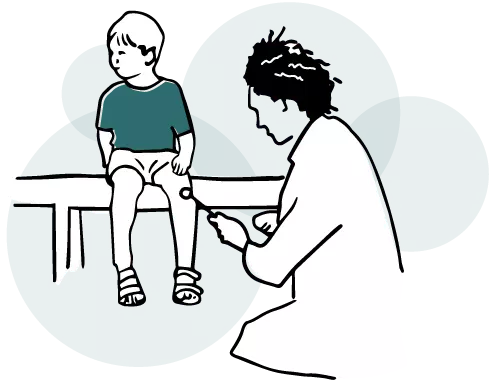

Management of MPS II: An MDT Approach (Neurology)


Hydrocephalus6

Mental impairment that is profound and progressive*1

Seizures: commonly tonic-clonic that respond to anticonvulsant therapy*4

Developmental delay and regression*4

Spinal cord compression, leading to cervical myelopathy – which may initially present as reduced activity or difficulty in rising from a seated position1,3,5
*Neuropathic type only
The phenotypic expression of Hunter syndrome spans a wide spectrum between the severe neuropathic and the non-neuropathic types.1 Patients with the neuropathic phenotype have profound cognitive involvement, while those with the non-neuropathic phenotype will have minimal-to-no neurological involvement and retain normal or nearly normal intelligence.1–3
CNS abnormalities for neuropathic Hunter syndrome patients can include imaging findings of significant regional atrophy and enlarged ventricles.4
Evaluation
Neurologic involvement is initially suspected by globally delayed developmental milestones (e.g. the ability to sit unsupported, to walk, and to speak).1 Cognitive status should be evaluated with neurodevelopmental assessments rather than through CNS morphology and physiology, as structural abnormalities are not well-correlated with cognitive impairment in MPS II patients.4 It is necessary to evaluate multiple domains of function with age-appropriate instruments and to repeat testing at yearly intervals.4
Management of clinical consequences
Depending on the disease severity, neurological manifestations may include developmental delay, cognitive impairment, behavioral problems, seizures, spinal cord compression, carpal tunnel syndrome (CTS), and communicating hydrocephalus.5
1. Martin R et al. Pediatrics. 2008;121(2):e377-e386. 2. Burton BK, Giugliani R. Eur J Pediatr. 2012;171(4):631-639. 3. Giugliani R et al. Genet Mol Biol. 2014;37(2):315-329. 4. Muenzer J et al. Pediatrics. 2009;124(6):e1228-e1239. 5. Scarpa M et al. Orphanet J Rare Dis. 2011;6:72. 6. Holt JB et al. Pediatrics. 2011;127(5):e1258-e1265.
Hunter syndrome is a
progressive genetic disease
If you suspect Hunter syndrome, refer your patient to a metabolic geneticist for an accurate diagnosis.